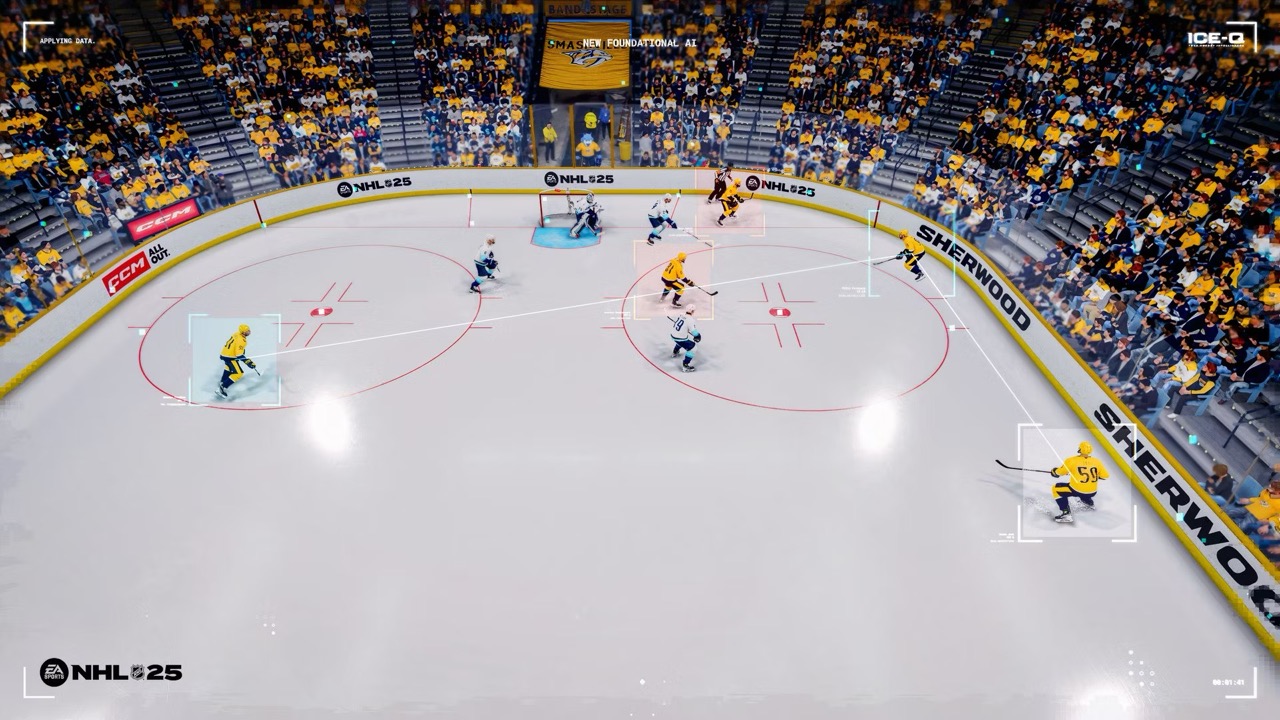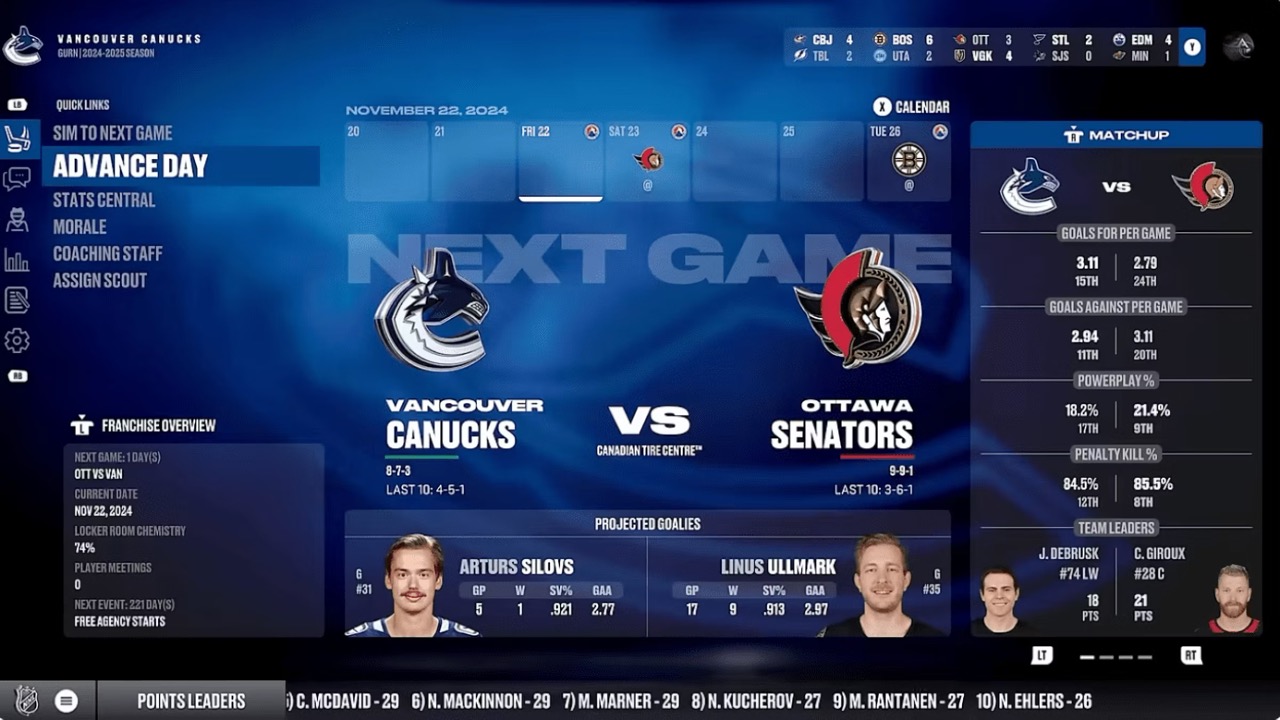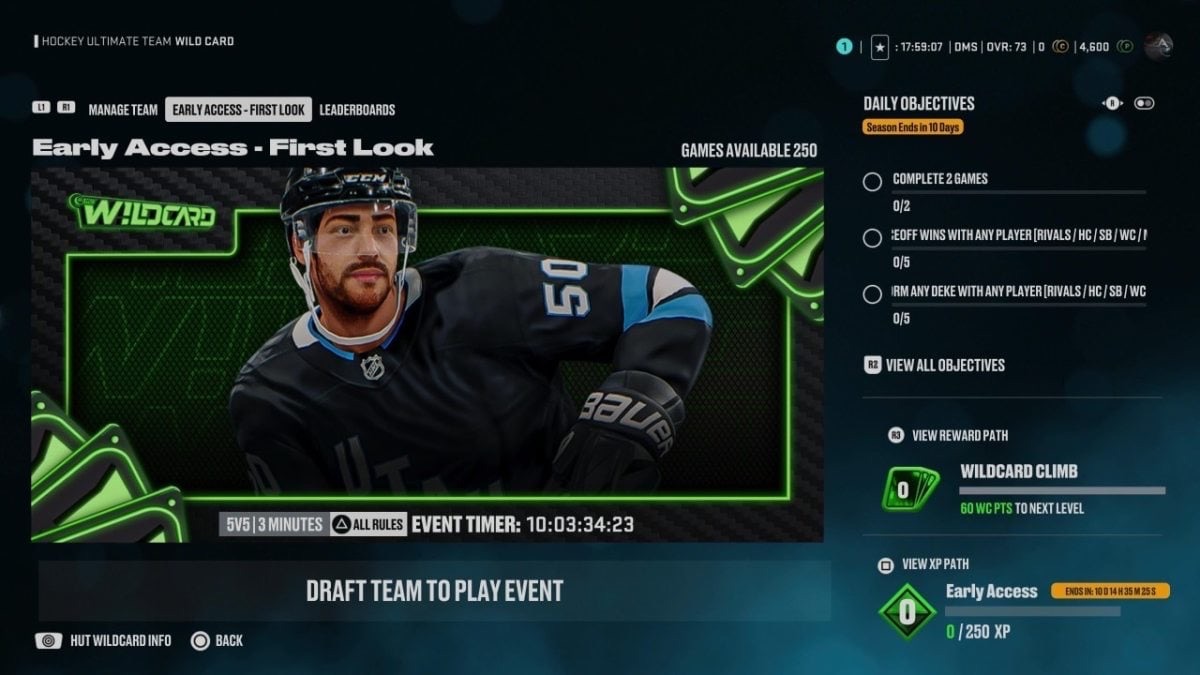NHL 25 Review (PS5)
Summary: NHL 25 features some new AI and player models, but not much different here than NHL 24.
3.8
Frozen in Time
Unlike NBA 2K25 where slowing the game down arguably increased both authenticity and accessibility, I’m not exactly sure NHL 25 accomplishes the same with its attempt.
Specifically, and in contrast to NHL 24, NHL 25 plays a much slower paced game, where fast rushes down the ice are now a lot less frequent, and the puck feels noticeably heavier when flying off a stick. I appreciate the shift from insane speeds and zany skill moves to normalcy, but this is such an extreme contrast the game no longer feels, well, ice hockey fast.
On the flipside, an adjustment I do appreciate is NHL 25’s upgrades to body control and positioning, long-time annoyances of the NHL franchise. Until now, defense could only be executed by poke or stick check (often producing penalties), manual stick (severely neutered over the years), or massive hits (generated by right analog stick). In NHL 25, natural collisions will free up pucks in realistic ways, very useful in opening up formerly clogged neutral zone play.
Goalies aren’t as feast or famine in NHL 25, but boy are they terrible at close range shots even at poor angles and slower shot speeds. So many goals – even on elite goalies – are scored on what should be simple stops and covers. Disclaimer: goalie play is typically the most controversial thus continuously patched aspect of NHL, and I would suspect this will be adjusted in some fashion several times over the year.
Player AI is touted as improved from NHL 24, and it is certainly evident in breakouts and off-the-puck movement. It isn’t, however, in who receives an actual pass, as centering passes now too frequently go to out of position wingers. Defenseman noticeably play their position better in offensive zones, but there is little additional intelligence in how they attack in their own ends. EA terms the improved AI as ‘Ice-Q,’ but I just didn’t see the benefits of touted improved vision control on the offensive and defensive sides, nor off puck player movement and physical actions.
Visually, NHL 25 features a completely updated player appearance model, which – while beautiful to look at – is sadly lost in so much carrying over from NHL 24. While players better look their respective parts, with such similar animations, presentation and post goal celebrations to NHL 24, it isn’t completely appreciated. The scoreboard, however, is finally where it should be in the top left corner and with more specificity. Coaches are now featured in cutaways, there’s more diversity in cameras on replay, and ‘grudge match’ mode highlights rivalries of note. Sadly, almost no augmented reality graphics are significantly improved or added to. Audio seemingly is the same, albeit with an updated and decent soundtrack.
Noting the physics and AI changes, NHL 25 plays very similar to NHL 24…which isn’t a bad thing…but I was hoping for a lot more. The faceoff dynamic, for example, is screaming for a complete overhaul, as is goalie play in the trapezoid where so little continues to occur here. I do like the addition of intelligent one timers (now with target indicators), something that adds light panache to the over-spamming of this technique without any real distinguishing factors. Vision control, also new to NHL 25, doesn’t wow.
The in-the-zone pressure system persists (where offensive players receive an advantage on how long they persistently maintain pressure on an opposing goalie), but still (other than reduced goalie save ability) no obvious fatigue factor evident on players stuck for longer shifts and/or sister offense advantages.
Similarly – even with the improved AI – power plays still don’t feel like them. There is still not enough movement in an opposing zone during one, likewise no unique attempt to execute breakouts indicative of having a man advantage. While slowing the game down does help in capturing this edge somewhat (as ironically being shorthanded prior helped with more speed to capitalize on), defenseman do not feel unique from forwards on special teams. And there remains no true champions of manual stick defense, a shame as this should be such a cool part of the series.
Players, however, do remain on the ice longer after being hit, which adds some needed strategic gamble when stepping up for a big hit (as in risk versus reward). Also, players thankfully no longer collide with each other en masse at blue lines, more realistically bouncing off opposition, as appropriate. This received specific love in NHL 25, per EA. While deflections also got some amore in NHL 24, there’s not enough here (once again) on shots from the point to specifically be deflected, nor shot passes or benefits of screening a goaltender. Guess we’re waiting until NHL 26.
Perhaps the biggest leap from NHL 24 to NHL 25 resides in Franchise mode, which inserts contract negotiations (essential in a salary cap system), also conversational trees (which impact success/failure criteria). As there no other console hockey simulator in town, these are nice to have for closet GMs amongst us.
Hockey Ultimate Team remains similar, albeit a new randomized Wild Card mode which adjusts rules over seasons and – akin to Franchise mode – now features a salary cap. The latter seems a bit silly for a microtransaction heavy area, as it may end up punishing players for paying for better cards(?). Finally, World of CHEL gets a smattering of new modes, some cosmetic silliness, etc. Nothing huge here either.
All in all, NHL 25 looks and feels like NHL 24.5. Unlike NHL 24 – a more dramatic leap for the series – NHL 25 is a step in the right direction albeit simultaneous misstep with the new pace and odd decisions with goalie acumen. Improved player models and AI updates are nice, but neither look and feel different enough. Last, if you’re a hockey aficionado, the updated rosters may be worth the price of admission alone, with launch ones surprisingly accurate to include line combinations.
Final Thoughts
Outside of some subtle AI and graphical tweaks, NHL 25 seemingly took a year off in advancing the series. It looks and plays slightly better, but struggles to cope with its new much slower speed identity. There’s just nothing here screaming ‘first day purchase,’ but – while very similar to NHL 24 – remains a solid offering.










